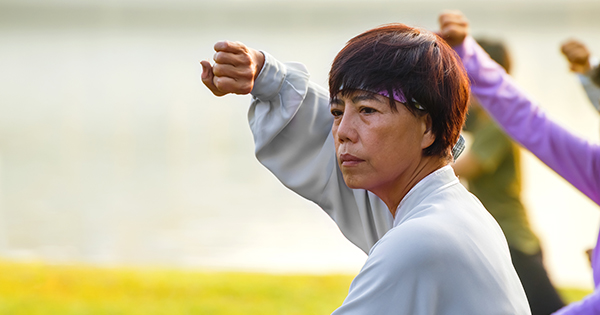Most Taijiquan(太極拳)practitioners are familiar with Wu Yuxiang’s (武禹襄) writing stating (as translated by Paul Brennan) “Starting from your foot, issue through your leg, directing it at your waist, and expressing it at your fingers. From foot through leg through waist, it must be a fully continuous process…” This indicates that the body leads the hands (or from one’s root in the feet, to the point of application).
This is what we strive for in our solo practice. In a sense, it also applies to partner/opponent interactions because we typically power our applications in a unified manner beginning with our contact with the ground. But when interacting with another person, it is the conditions at the point of contact that determines how we act. Therefore, one could say that when interacting with someone else, it is the hands (or more accurately, the points of contact with an opponent) that lead the body.
As the classic attributed to Wang Zongyue (王宗岳) states (as translated by Paul Brennan), “The basic of basics is to forget about your plans and simply respond to your opponent.” Therefore, if one is responding to the opponent, then their movements, as transmitted through the point(s) of contact with them, dictate our actions. The point(s) of contact moves first, with our body “chasing” the hand in order to support the movements at the point(s) of contact.
Chen Ziming (陳子明) states (as translated by Paul Brennan) that “This art [Taijiquan] is entirely a matter of using your mind to move your hand, using your hand to guide your elbow, using your elbow to guide your shoulder, and using your shoulder to guide your body. In the case of practicing the solo set: the body leads the hand. In the case of partner practice: the hand leads the body.”
Solo forms (where the hand movements should be generated by the body) allow us to practice continuously connecting the segments of our body (from the feet to the hands) during movement. We also practice being relaxed, but not collapsed, in order to avoid having places where the power transmission may be impeded by stiffness or by breaks due to slackness. We try to emphasize “whole-body” in order to increase our effective mass, but we also emphasize “relaxation” because we do not want to be slowed down or inhibited due to tensions.
Some martial art styles practice tensing their bodies briefly at the instant of contact when striking, thus making the body “connected” (or one mass, like a single block) at that instant of contact, and then relaxing the tension immediately afterwards in order to regain their changeability. But it is different in Taijiquan as I understand it. We want to remain relaxed throughout, such that our changeability is maintained, but emphasize alignment in our practice in order to have “whole-body” power, but without the instant of tension that those other styles practice.
The first part of the following video (from the martial art of I Liq Chuan) dramatically shows punching without tensing the hand, since he is holding a raw egg while breaking the boards. It uses proper alignment of the loose body, rather than an instant of tension on impact, to transmit force from the ground, through the body, and into the fist.
An analogy of round beads on a string can illustrate different approaches to the transmission of aligned force. If the beads centers are aligned while touching each other, then one can transmit force from the bead on one end to the last bead on the other end. While this can be done without tension on the string, the beads need to be aligned in order to do so. If the string was tied tightly in order to hold the beads tightly together, then force could also be transmitted from one end to the other; this would be like making connections by using tension.
Without tension, the beads on the string would be free to move in other ways if desired, but if the string holds them tightly together, then the possible movements are greatly restricted. In either case, though, one is able to transmit force from either end. If aligned, then it does not matter if the movement starts from the feet or from the hands, the force can still be transmitted. It is our alignment that allows all parts of our body to move (like all of the beads on the string) when one part moves.
Proper alignment for transmitting force from one segment to the final segment (without the need for tensing everything in order to lock them together at the instant of impact) can also be illustrated by the “Newton’s cradle” toy, or by using billiard balls that are lined up and touching each other, and then striking the first ball with the cue ball, and watching the last ball in the contacting/connected line be sent away. Both of these, like the beads on a string, use aligned but loose balls (not fastened together, or not “tensed”) to transmit the force. This illustrates “whole body” force transmission without requiring tension upon impact.
The body needs to have the proper structure to connect the hands to the feet upon impact/application, for increased power when issuing energy, or to respond to the attacks of one’s partner or opponent when receiving energy. Structural alignment allows for the transmission of force. If the hand starts, then the hand guides the elbow, the elbow guides the shoulder, and the shoulder guides the body, all the way to our feet touching the ground.

Leave a Reply